Quebec has proven to be a hotbed for junior mining company activity and perennially one of the industry’s favourite jurisdictions in which to operate. Gold remains the target of interest, but the province’s rich mineral endowment means juniors are also on the hunt for silver, platinum group metals, copper, lead-zinc, nickel, iron ore, rare earth elements, graphite and lithium.
ALEXANDRIA MINERALS

Alexandria Minerals’ land claims in the Val-d’Or area of Quebec. Credit: Alexandria Minerals.
Toronto-based, Eric Owens-led junior Alexandria Minerals (TSXV: AZX) is in the midst of a 30,000-metre, mid-year drill campaign at its Orenada gold property, situated on the Cadillac Break geological structure, immediately southeast of the city of Val-d’Or, Quebec.
Alexandria’s near-term goal is to expand the deposit to the east and west — especially the deposit’s Zone 1 — with an eye to completing a resource estimate before year-end.
As of 2009, Orenada had a near-surface resource of 4.3 million measured tonnes grading 1.36 grams gold per tonne (189,000 contained oz. gold), 6 million indicated tonnes of 1.01 grams gold and 4.7 million inferred tonnes.
With three rigs operating, the company had already completed 21,000 metres of drilling as of mid-September.
Alexandria says initial results from recent drilling already show gold zones being intersected over 1.1 km along strike at Zone 4, with widths up to 75 metres across strike, and to a 300-metre depth, with the deposit remaining open along strike and at depth.
Alexandria has some heavy hitters amongst its shareholders, including Sprott (8.5%), Agnico Eagle Mines (8%), Teck Resources (2%) and Iamgold (2%).
GALWAY METALS

Map of Galway Metals’ Estrades polymetallic property in northwestern Quebec. Credit: Galway Metals.
Galway Metals’ (TSXV: GWM; US-OTC: GAYMF) flagship project is its Clarence Stream gold project in New Brunswick, but it is also active at its past-producing, high-grade Estrades polymetallic project in northwestern Quebec, 95 km north of the town of La Sarre.
Estrades is a volcanogenic massive sulphide deposit with a resource calculated by Roscoe Postle Associates in August 2016 of 1.3 million indicated tonnes grading 3.89 grams gold per tonne, 137.9 grams silver per tonne, 7.95% zinc, 1.12% copper and 0.65% lead. Inferred resources add 1.2 million tonnes grading 1.54 grams gold, 68.6 grams silver, 4.31% zinc, 1.46% copper and 0.26% lead.
Breakwater Resources spent $20 million at Estrades in 1990, including building a ramp to 200 metres depth, a ventilation raise and associated infrastructure. Some 94,000 metres of historic drilling has been carried out at the site. Production at Estrades in 1990–91 totalled 175,000 tonnes grading 6.4 grams gold, 172.3 grams silver, 12.9% zinc and 1.1% copper.
Galway has been carrying out a 12,500-metre drilling campaign at Estrades in recent months, with highlights such as hole 17E-27, which returned 3.3 metres (from 500 metres downhole) grading 28.5% zinc, 2.2 grams gold, 181 grams silver, 0.3% copper and 0.9% lead.
In September, Galway announced a 54% increase in resources at Clarence Stream, including 6.2 measured and indicated tonnes grading 1.96 grams gold for 390,000 contained oz. gold. The company is drilling 24,000 metres at the project in 2017.
Galway Metals, which was spun out of Galway Resources after its acquisition for US$340 million, had $6.4 million in cash as of the second quarter of 2017.
GENESIS METALS

Channel sampling at Genesis Metals’ Chevrier gold property in Quebec’s Chibougamau gold camp. Credit: Genesis Metals.
Brian Groves and Jeff Sundar-led Genesis Metals (TSXV: GIS; US-OTC: GGISF) is focused on advancing its Chevrier gold deposit in Quebec’s Chibougamau camp. The property is 35 km southwest of the town of Chibougamau, and is serviced by excellent infrastructure, including easy road and airport access.
Chevrier’s Main Zone has 4.6 million inferred tonnes grading 1.99 grams gold per tonne (300,000 contained oz. gold) according to a 2010 estimate, while the South Zone appears to show similar potential — though it has been probed by only 19 holes, which is not enough to calculate a resource.
Genesis acquired Chevrier in the second quarter of 2016, and subsequently carried out preliminary work, such as data compilation, resampling of trenches and an induced-polarization (IP) geophysical surveying.
Armed with a $4-million financing, Genesis is now in the midst of a 10,000-metre drilling and trenching campaign designed to test the Main Zone at depth and to the north, plus other IP targets.
Genesis aims to calculate a resource estimate in the second quarter of 2018.
Several members of Genesis’ management team were part of Underworld Resources, which found gold in the Yukon and was subsequently sold to Kinross Gold.
LOMIKO METALS

Lomiko Metals’ sample of +50 mesh, extra-large crystalline flake graphite with +99% carbon purity. Credit: Lomiko Metals.
Vancouver-based, Paul Gill-led Lomiko Metals (TSXV: LMR; US-OTC: LMRMF) is fully invested in the “green economy” and is focused on graphite and lithium mineral development, as well as graphene technology.
Lomiko’s flagship graphite asset is its 80%-owned La Loutre flake-graphite property, 192 km northwest of Montreal, Que., which has an indicated resource of 4.1 million tonnes grading 6.50% carbon-graphite (at a cut-off of 3% carbon-graphite for 268,800 tonnes of graphite.
The firm says drilling in 2016 and 2017 has uncovered a high-grade zone with the same footprint, but better economics.
Lomiko notes La Loutre is 53 km from the 20-year Imerys graphite mine, which has 5.2 million open-pittable tonnes grading 7.42% carbon-graphite.
Lomiko owns 40% of Graphene ESD — a U.S. company established in partnership with Graphene Labs and Stony Brook University to develop patents for graphene-based energy storage devices and converting graphite to graphene oxide and reduced graphene oxide.
The company has 25.1 million shares outstanding at a $4-million market capitalization.
METANOR RESOURCES

Miners in Metanor Resources’ Bachelor gold mine, 225 km northeast of Val-d’Or, Quebec. Credit: Metanor Resources.
Metanor Resources (TSXV: MTO; US-OTC: MEAOF) has been producing gold since 2008 at its Bachelor gold mine in Quebec’s Urban-Barry gold camp near the town of Lebel-sur-Quévillon, including 35,000 oz. gold over the past 12 months at a cash cost of US$940 per oz. gold.
The current shaft at Bachelor extends 700 metres, with a hoisting capacity of 1,500 tonnes per day. The mill has a capacity of 800 tonnes per day and has carbon-in-pulp recovery, and could be expanded to 1,200 tonnes per day for less than $4 million.
Metanor is exploring the potential of a gold zone at Bachelor that is 250 metres below the lowest level. Drilling started in September 2017 to test what might be the intersection at depth of the Bachelor mine and Moroy zones.
Metanor has its Barry Underground project, where the company is probing potential gold mineralization under and along strike of an existing pit.
The firm notes that its Bachelor mill is the “only mill in the heart of the Urban-Barry camp” which could set the stage for more consolidation in the camp or new toll-milling opportunities.
At the end of August, Metanor had 81.7 million shares outstanding (105.7 million fully diluted) for a $65-million market capitalization.
MIDLAND EXPLORATION

Location map of Midland Exploration’s active projects in Quebec, with partner name and commodity of interest. Credit: Midland Exploration.
Prospect-generator Midland Exploration (TSXV: MD) has a suite of gold, platinum group metals, base metals and rare earth element projects throughout Quebec, from Ungava down to the Quebec Lowlands.
In recent years it has had joint ventures and other dealings with companies such as Iamgold, Altius Minerals, Teck Resources, Osisko Mining, Agnico Eagle Mines, Soquem, Abcourt Mines, NioBay Metals and Japan Oil, Gas and Metals National Corporation.
At last count, Midland has no debt, $12.5 million in its treasury and was connected to $8-million worth of exploration work (mostly by partners) in 2017, including more than 25,000 metres of drilling.
Midland says its recent highlights include: high-grade gold veins discovered on the Willbob project in Ungava; a zinc-bearing belt discovered with Altius on the BJ JV project; a nickel-copper-cobalt discovery with Altius on the BJ JV project; an option agreement with Niobay for the La Peltrie project; an option agreement with Iamgold for the Heva project; and a new alliance with Altius in the James Bay area.
MONARQUES GOLD

The headframe at Richmont Mines’ Beaufor gold mine, 25 km northeast of Val d’Or, Que. Credit: Richmont Mines.
Monarques Gold (TSXV: MQR; US-OTC: MRQRF) is another junior developing gold projects near Val-d’Or, Que., and in the wider Abitibi region.
The firm’s biggest news of late is a deal announced in early September to acquire all of Richmont Mines’ (TSX: RIC; NYSE: RIC) gold assets in Quebec, which consist of “all of Richmont’s mineral claims, mining leases and mining concessions, including the Beaufor mine, the Chimo, Monique and Wasamac properties, and all the issued and outstanding shares of Usine Camflo Inc., as well as all mills, buildings, structures, equipment, inventory and property.”
In return Monarques will issue shares to Richmont worth 19.9% of the company and will assume certain closure liabilities worth $5 million. Three net smelter return royalties will be payable by Monarques to Richmont.
Monarques will immediately sell the newly acquired Couvan asset to Probe Metals for $400,000 in cash.
After the deal closes, Monarques will be a gold producer (Beaufor produced 19,562 oz. gold for Richmont in 2016) and will have $12 million in cash and equivalents. Some 150 Richmont employees will join Monarques.
Before the Richmont deal, Monarques’ flagship asset had been its prefeasibility stage Croinor gold property, 55 km east of Val-d’Or, assembled though a consolidation of four properties in 2014.
NOUVEAU MONDE GRAPHITE

Sampling at Nouveau Monde Graphite’s Matawinie high-purity, flake graphite deposit north of Montreal, Quebec. Credit: Nouveau Monde Graphite.
Montreal-based Nouveau Monde Graphite (TSXV: NOU; US-OTC: NMGRF) is developing the Matawinie high-purity, flake graphite deposit located north of Montreal, Que., which Nouveau Monde describes as the “only major North American graphite discovery since 2001.”
Nouveau Monde says its goal is to “become a major low-cost producer of anode material for Lithium-ion batteries and other value-added graphite products with the industry’s lowest environmental footprint, driving sustainable development in the Upper-Matawinie region.”
Matawinie, Nouveau Monde says, provides high-purity graphite and large-flake distribution, plus a location that translates to “strong economics, due to local infrastructure and proximity to customers.”
With the nearby Lac des Îles graphite mine operated by Imerys nearing depletion in 2020, there may be opportunities for Matawinie to step into any supply gap.
Meanwhile Nouveau Monde is designing a mine at Matawinie that could produce 50,000 tonnes per year of graphite.
According to a March 2017 estimate, Matawinie’s in-pit West Zone contains 32.9 million indicated tonnes grading 4.5% graphite, while the South Zone contains 26.3 million indicated tonnes grading 3.73% graphite, plus 19.2 million inferred tonnes of 3.67% graphite.
Nouveau Monde intends to complete a feasibility study at Matawinie during the second quarter of 2018.
PROBE METALS

Probe Metals’ VP of corporate development Patrick Langlois (left) and COO Yves Dessureault stand on outcrop at the Val-d’Or East gold project in Quebec. Credit: Probe Metals.
David Palmer-led Probe Metals (TSXV: PRB; US-OTC: PROBF) is active in what it considers the “under-explored” region east of Val-d’Or, Que., and has assembled a 327 sq. km land package partly through various deals with Adventure Gold, Richmont Mines, Alexandria Minerals, QMX Gold and Monarques Gold.
Probe’s Val-d’Or East project has total inferred resources of 9.13 million tonnes grading 2.63 grams gold per tonne for 770,000 contained oz. gold. It is the subject of a 75,000-metre drilling campaign that is testing the New Beliveau gold deposit to the west, north and south, as well as along parallel dikes similar to those hosting the past-producing Beliveau mine.
An updated resource estimate is scheduled to be completed later this year.
Probe has several high-profile shareholders, including Goldcorp (14%), Caisse de dépôt et placement du Québec, and Sprott Asset Management, and boasts over $30 million in cash and investments.
Probe has 93.5 million shares outstanding (106.5 million fully diluted) and a $153-million market capitalization.

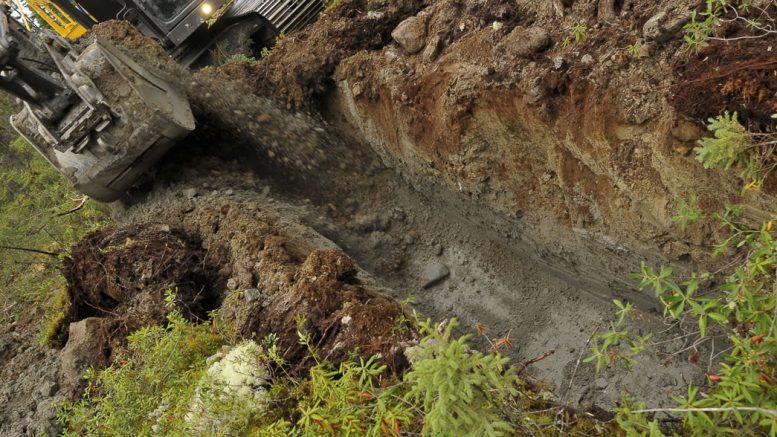
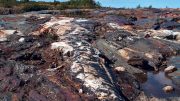
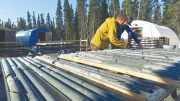
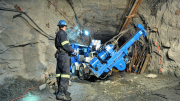
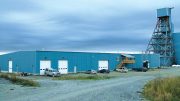
Be the first to comment on "Quebec Snapshot: Nine juniors with active exploration and development projects"